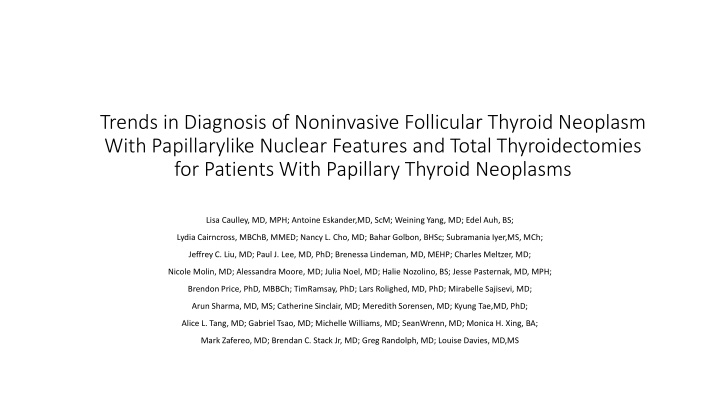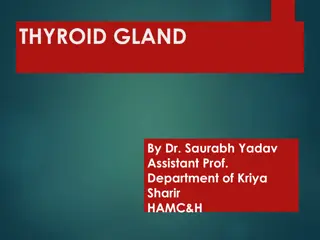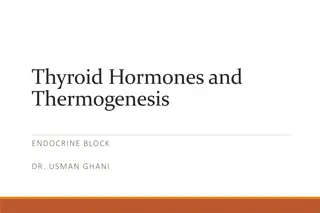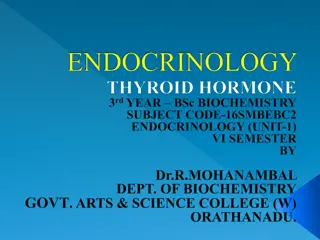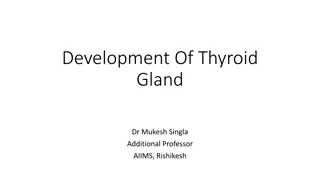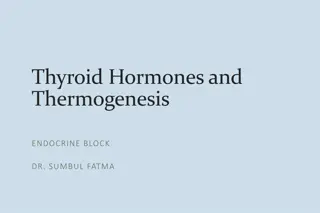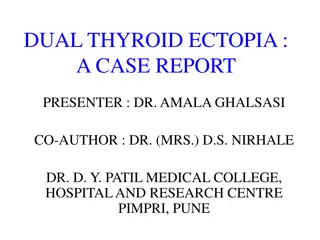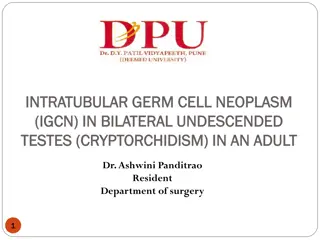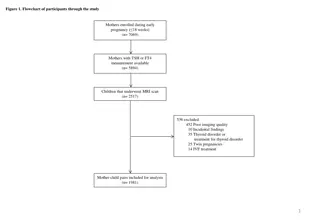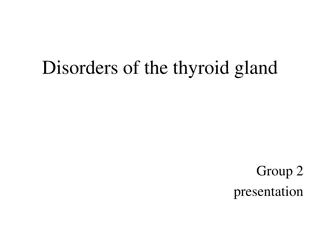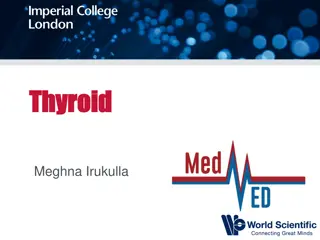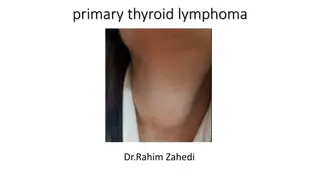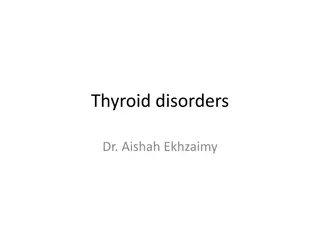Trends in Diagnosis of Noninvasive Follicular Thyroid Neoplasm
The incidence of thyroid cancer is rising, leading to the reclassification of certain neoplasms. This study aims to assess the impact of these changes on diagnostic rates and surgical practices for patients with papillary thyroid neoplasms.
Download Presentation

Please find below an Image/Link to download the presentation.
The content on the website is provided AS IS for your information and personal use only. It may not be sold, licensed, or shared on other websites without obtaining consent from the author.If you encounter any issues during the download, it is possible that the publisher has removed the file from their server.
You are allowed to download the files provided on this website for personal or commercial use, subject to the condition that they are used lawfully. All files are the property of their respective owners.
The content on the website is provided AS IS for your information and personal use only. It may not be sold, licensed, or shared on other websites without obtaining consent from the author.
E N D
Presentation Transcript
Trends in Diagnosis of Noninvasive Follicular Thyroid Neoplasm With Papillarylike Nuclear Features and Total Thyroidectomies for Patients With Papillary Thyroid Neoplasms Lisa Caulley, MD, MPH; Antoine Eskander,MD, ScM; Weining Yang, MD; Edel Auh, BS; Lydia Cairncross, MBChB, MMED; Nancy L. Cho, MD; Bahar Golbon, BHSc; Subramania Iyer,MS, MCh; Jeffrey C. Liu, MD; Paul J. Lee, MD, PhD; Brenessa Lindeman, MD, MEHP; Charles Meltzer, MD; Nicole Molin, MD; Alessandra Moore, MD; Julia Noel, MD; Halie Nozolino, BS; Jesse Pasternak, MD, MPH; Brendon Price, PhD, MBBCh; TimRamsay, PhD; Lars Rolighed, MD, PhD; Mirabelle Sajisevi, MD; Arun Sharma, MD, MS; Catherine Sinclair, MD; Meredith Sorensen, MD; Kyung Tae,MD, PhD; Alice L. Tang, MD; Gabriel Tsao, MD; Michelle Williams, MD; SeanWrenn, MD; Monica H. Xing, BA; Mark Zafereo, MD; Brendan C. Stack Jr, MD; Greg Randolph, MD; Louise Davies, MD,MS
Background The incidence of thyroid cancer has increased over the past 3 decades Rise in thyroid cancer is postulated to be in part attributable to the detection of small, localized papillary thyroid carcinomas (PTCs), particularly early-stage PTCs that have increased without improvements in thyroid cancer related morbidity or mortality rates Strategies have been developed to try to mitigate overtreatment American Thyroid Association (ATA) 2015 guidelines recommending consideration of lobectomy for qualifying low-risk thyroid neoplasms up to 4 cm in size Noninvasive encapsulated follicular variant PTC was reclassified as noninvasive follicular thyroid neoplasm with papillarylike nuclear features (NIFTP) to reflect key histopathologic features of PTC but a lack of aggressiveness
Objective To determine: How the new NIFTP classification has changed diagnostic rates of PTC Whether there is variation in use of the new diagnostic category across different locations Whether extent of surgery for PTC has changed with the new ATA guideline recommendations
Methods Multicenter, multinational retrospective analysis of patients who underwent thyroid-directed surgery 18 contributing centers from 6 countries (US, Canada, Denmark, South Korea, South Africa, and India) Eligible cases included adult patients (18 years and older at the time of surgery) who had undergone thyroid-directed surgery for any thyroid pathology in calendar years 2015 and 2019 Each institution submitted the first consecutive 100 or highest number available (if <100) of pathology records Centers were also invited to submit the first 100 or highest number available of cases for 2016, 2017, and 2018 (if available)
Methods A standardized case report form was developed, piloted, refined and distributed to all participating institutions Data elements extracted: Age Sex Year of surgery Fine-needle aspiration (FNA) cytology result Whether molecular testing was performed Type of surgery performed Greatest dimension of the nodule or tumor Final pathology
Methods Data sources: Individual patient clinical records Operative reports Pathology reports
Methods Primary Outcomes Frequency of NIFTP diagnosed in patients who underwent thyroidectomy in 2019 Secondary Outcomes Proportion of PTC diagnosed among all thyroidectomies in 2015 and 2019 Proportion of total thyroidectomies performed in patients diagnosed with PTC in 2015 and 2019 Factors contributing to extent of primary surgery over the 2 study periods For sites that provided data for 2016 through 2018 Proportion of NIFTP diagnosed among all thyroidectomies Proportion of PTC diagnosed among all thyroidectomies Total thyroidectomies performed in patients diagnosed with PTC
Methods Statistical Analysis Demographics were summarized by year Continuous variable comparisons were evaluated using a Mann Whitney U- test Categorical comparisons between patients were made using Chi-squared test Logistic regression analysis to evaluate patients who differed by year surgery but were similar with respect to other characteristics
Discussion In this multi-institutional analysis of a cohort of PTC specimens, in 2019 the diagnosis of NIFTP was observed in only 4.7% of papillary thyroid neoplasms Uniform low rates of application of the NIFTP diagnosis across participating countries Approximately 40% of eligible PTCs were treated with hemithyroidectomy in 2019 More than 50% of PTCs eligible for deescalated management with hemithyroidectomy continued to be treated with total thyroidectomy in 2019
Discussion Strengths of this study: Provides contemporary information on trends Inclusion of international sites Straightforward design Use of standardized data collection approaches across institutions Study limited by: Lack of information about reasons for selection of surgical approach Population limited surgical thyroid disease
Summary and Conclusion This is the first study of the American Head & Neck Society Endocrine Surgery Section Collaborative, a global network of endocrine surgeons The 2 approaches studied to assess progress in efforts to prevent or mitigate overtreatment of early-stage PTC have shown mixed success so far Reclassification of selected PTCs to NIFTP has only been applied to a small patient population in this multicenter, multinational analysis Fewer patients eligible for hemithyroidectomy underwent total thyroidectomy, in keeping with current recommendations
